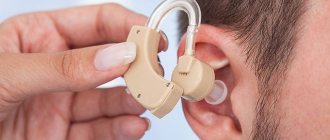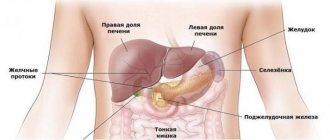Fainting and loss of consciousness - what's the difference?
Fainting may be a harbinger of ischemic or hemorrhagic stroke, in which vascular ruptures, acute thrombosis or embolism occur. In this state, the loss of consciousness is deep and longer lasting than fainting. A transition into a coma is not excluded. Epilepsy with impaired consciousness and atonic seizures are not called fainting. Seizures occur as a result of a disturbance in the excitation of the cerebral cortex (nerve cells), which causes an imbalance of inhibition and excitation.
| Characteristics | Loss of consciousness | Fainting |
| Duration | more than 5 minutes | from 20 seconds to 2 minutes |
| Exit from state | slow | fast |
| Causes | epilepsy, stroke | reflex reaction, cardiac ailments, orthostatic cerebral hypotension |
| Memory of past events before fainting | There is | No |
| Orientation and recovery | slow or not happening | instant and complete |
| EEG changes | There is | No |
A nervous system disorder puts too much stress on the body, which is difficult for the brain center to bear. Shock occurs, a sharp decrease in blood pressure, and disruption of brain function. Fainting can occur with other disorders in the human body that are difficult to identify. The district nurse's handbook describes common causes of fainting:
- emotional stress;
- a feeling of general weakness (poor nutrition, hunger, prolonged anxiety);
- lack of oxygen in the room where a person lives - the oxygen level decreases due to the accumulation of a large number of people in the room, air pollution, poor ventilation system;
- result of heat stroke;
- long periods of standing;
- anemia, arrhythmia;
- bronchial asthma;
- traumatic brain injury;
- severe cough or flu-like fever;
- abdominal injuries;
- blood loss;
- fatigue, overwork;
- pregnancy;
- side effect from taking medications;
- fright;
- adolescence or old age;
- intoxication (with alcohol abuse, infectious origin);
- allergic reaction;
- serious illnesses.
Other factors that may lead to loss of consciousness
Diseases of the autonomic nervous system. The autonomic nervous system (ANS) is the autonomic nervous system, which is part of the nervous system, controls vital functions, while the work of the autonomic nervous system is not actually controlled by the person himself (heartbeat, to what extent your blood vessels should be tense and breathing , etc.) .d). Disturbances in the regulation of vascular tone are called vegetative-vascular dystonia. They are characterized by instability of blood pressure, dizziness, sweating , cold extremities, etc. If one of these diseases is observed, other serious symptoms may appear, such as erectile dysfunction ( impotence ), bladder incontinence and loss of bowel control, loss of normal pupillary reflexes or decreased sweating, tearing, and drooling.
Diseases directly related to the regulation of blood pressure and heart rate, parts of the nervous system: diabetes mellitus, alcoholism, amyloidosis (a protein metabolism disorder accompanied by the formation and deposition in tissues of a specific protein-polysaccharide complex - amyloid), etc. The frequency of fainting may increase when taking medications aimed at lowering blood pressure. Low fluid intake can lead to a decrease in circulating blood volume, which can lead to loss of consciousness. Persons suffering from cardiovascular diseases are strongly advised not to stay in hot rooms (including a hot bath, sauna or sauna) for a long time, or in direct sunlight. This situation contributes to impaired blood flow, resulting in serious changes in blood pressure.
Heart or circulatory diseases in which the normal flow of blood to the brain is disrupted. These diseases include heart blocks (problems with the electrical conduction of the impulses that control the heart muscle), sinus node disease (this is a certain specialized area of the heart that regulates the rhythm of the heartbeat), cardiac arrhythmia (irregular heart rhythm), blood clot in the lungs, abnormal narrowing aortic valve or some other pathology of the heart structure.
Diseases affecting conductivity and stimulation of certain nerve endings. These include urinary syncope (fainting during or after urinating); glossopharyngeal neuralgia (fainting due to inflammation and pain of certain nerve endings of the oropharynx); cough syncope (fainting after a long, intense cough) and stretching syncope (fainting caused by improper stretching of the neck and arms). Fainting when stretching is a rare condition that most often occurs in healthy adolescents. Fainting is provoked by simultaneous extension of the neck and stretching of the arms. It is believed to be caused by compression of the vertebral arteries. Also, such fainting can occur when exercising on horizontal bars .
Causes of fainting
The condition in question is often a consequence of a pathological process occurring in the body or is a symptom of a certain primary ailment. There are a huge number of abnormal conditions that are accompanied by loss of consciousness. These include: illnesses accompanied by a decrease in cardiac output (heart rhythm disorder, angina attacks, aortic stenosis), defects in the nervous regulation of capillaries (for example, with a rapid change in the position of the body, loss of consciousness may occur), hypoxia.
Dizziness and fainting are the result of a decrease in blood pressure, when the human body is unable to quickly adapt to changes in hemodynamics (the passage of blood through the capillaries). In a number of illnesses in which abnormalities of the heart rhythm are noted, the myocardium, when pressure levels decrease, is not always able to cope with the sharply increased load and quickly increase blood output.
The cause of fainting is the dilation of muscle blood vessels due to physical exertion. The capillaries, remaining dilated for a certain time after the end of physical effort, contain a lot of blood required to remove metabolic products from muscle tissue. At the same time, the pulse rate decreases, therefore, the volume of blood released by the myocardium with each contraction decreases. This causes a decrease in blood pressure, causing loss of consciousness.
In addition, fainting is often caused by an acute decrease in the amount of circulating blood, which occurs with blood loss or dehydration (for example, with diarrhea, excessive urination or sweating).
Nerve impulses affecting compensatory processes and resulting from various algies or intense emotional shocks also often cause fainting.
Loss of consciousness is possible during the occurrence of certain physiological processes, such as urination, coughing. This occurs due to tension, which provokes a decrease in the amount of blood flowing to the myocardium. With certain pathologies of the esophagus, fainting sometimes occurs when swallowing food.
Hyperventilation of the lungs in combination with anemia, a decrease in carbon dioxide or blood sugar levels also often provoke the onset of fainting.
Quite rarely, more often in people of an older age group, microstrokes can manifest as loss of consciousness due to a sharp decrease in blood supply in a separate segment of the brain.
Temporary loss of consciousness may be associated with cardiac pathologies, but it is often caused by factors not directly related to abnormalities of this organ. Such factors include dehydration, vascular disorders in the limbs in the elderly, pharmacopoeial drugs that affect blood pressure, Parkinson's disease, and diabetes.
A decrease in the total amount of blood or poor condition of the capillaries of the extremities causes a disproportionate distribution of blood in the legs and a limited supply of blood to the brain when the individual assumes a standing position. Other causes of transient loss of consciousness, not caused by cardiac pathology, include fainting after a series of situational events (coughing, urination, defecation) or due to the outflow of blood.
The condition in question occurs due to a stereotypical reaction of the nervous system, leading to a slowdown of the heart rhythm and dilation of capillaries in the lower extremities, which causes a decrease in pressure. The consequence of such a reaction of the body is that less blood (and therefore oxygen) enters the brain structures, since it is concentrated in the limbs.
Cerebral hemorrhages, pre-stroke or migraine-like conditions, also often cause transient loss of consciousness.
Among the factors caused by cardiac pathologies, the following ailments can be identified: an abnormal heart rhythm (the heartbeat can be too fast or too slow), dysfunction of the heart valves (aortic stenosis), high pressure in the blood capillaries (arteries) supplying the lungs with blood, aortic dissection, cardiomyopathy.
It is also necessary to distinguish between fainting states caused by non-epileptic and epileptic nature. The first one develops due to the above reasons. The second occurs in people suffering from epileptic seizures. Its appearance is due to a combination of intracerebral factors, namely the activity of the epileptogenic focus and convulsive activity.
Why might fainting happen?
The main cause of fainting is a lack of cerebral circulation associated with a sharp decrease in blood pressure. Various situations can cause this decrease:
- A sharp rise. If you sit or lie down for a long time and then quickly get up, your heart may simply not have time to pump blood to your head.
- Stress.
- Hunger. Due to lack of nutrients, the production of blood cells - red blood cells - is reduced. And this, in turn, causes attacks of a sharp drop in pressure - the famous hungry fainting.
- Blood loss. For example, with a cut, internal hemorrhage (gastrointestinal, uterine), donation.
- Dehydration.
- Intoxication. Alcohol, food, and maybe an infectious disease, for which, for example, the flu is to blame.
- Hormonal disorders: thyroid dysfunction, diabetes, low blood sugar (hypoglycemia).
- Heart problems.
As you can see from this list, relatively harmless causes can lead to fainting. But not always.
Signs of fainting
At the first manifestation of symptoms, it is important to be aware of what to do in case of fainting without harming the victim before the doctor arrives. There are 3 stages of fainting, each of which is characterized by its own symptoms:
- presyncope (pre-syncope);
- syncope phase;
- postsyncope (postsyncope) phase.
Common signs of fainting in a person:
- dizziness;
- drop in blood pressure;
- sudden weakness;
- cold sweat;
- noise in ears;
- veil or darkening before the eyes;
- nausea;
- rare breathing;
- numbness of the limbs;
- insufficient blood circulation;
- rare, shallow breathing.
The difference between fainting and loss of consciousness
The external manifestations of fainting or syncope are very well studied in medicine.
Therefore, it is difficult to miss such a state or confuse it with something else. At the first stage, a person experiences unpleasant physiological sensations. The head begins to feel dizzy, there is a ringing in the ears and the appearance of small black threads in front of the eyes, which are popularly called “floaters”.
Presyncope is characterized by general weakness and severe sweating. A person is poorly oriented in space, his legs stop obeying him. This period lasts about 1-2 minutes.
At the next stage, consciousness turns off and the person falls. Moreover, the fall is not sharp, but smooth; people say “it began to settle.”
During the fainting itself, a change in heart rate is observed: it either slows down too much, or, conversely, increases in speed, but is barely palpable on the pulse. The victim's pupils do not respond to external stimuli. The skin becomes gray or very pale.
After a person recovers from syncope, they may continue to experience dizziness, muscle weakness, and nausea for some time. However, the memory is not impaired, the victim understands what happened, understands what happened before his fall.
- Loss of consciousness for a short period of time, falling. The horizontal position, as we have already noted, in this case leads to an improvement in cerebral blood supply.
- When examining the respiratory tract, there are no obstructions to breathing.
- The victim's breathing is shallow and rare.
- The pulse is slow and weak.
- There is tinnitus, nausea, dizziness, cold sweat and a “veil” before the eyes, the limbs become numb.
Fainting, as we have defined it, is a short-term state of memory loss in which muscle tone does not decrease and protective reflexes (swallowing, breathing) do not disappear. Accordingly, fainting eliminates the danger of suffocation, while, if we are talking about loss of consciousness, muscle relaxation leads to the retraction of the tongue with subsequent blockage of the airways.
It should be noted that fainting often develops into loss of consciousness, which determines a serious danger to the life of the victim. This mainly happens when you hit your head as a result of a fall. In this case, if you faint, convulsions may develop, acting as a symptom of restoration of normal cerebral circulation. These seizures have nothing to do with epilepsy.
With partial loss of consciousness, the first signs of fainting are observed, which indicate the need for medical assistance. What to pay attention to:
- Noise, ringing in the ears.
- Dizziness, feeling of lightness, emptiness in the head.
- Muscular and general weakness.
- Numbness, loss of sensitivity in the extremities.
- Darkening in the eyes, the appearance of foreign objects in the field of view.
- Cold sweat.
- Nausea, possibly vomiting.
In deep fainting, the skin turns pale, cold and moist. Breathing is shallow, slow, the reaction of the pupils to a light stimulus is weakened or absent. Patients often experience a weak pulse and low blood pressure. There are stages in the development of syncope:
- Presyncope. Prodromal period of warning signs. Usually lasts a few seconds or minutes.
- Direct syncope. Loss of consciousness.
- Post-syncope. The period when consciousness and the ability to navigate in space are restored.
Emergency care for fainting includes a physical examination of the patient. The prognosis is unfavorable if the following symptoms are present: severe pain in the chest, shortness of breath, sharp, intense pain in the head, pain in the abdomen, significantly increased blood pressure.
Unfavorable factors include severe heart rhythm disturbances - bradycardia (beat rate less than 40 beats per minute), tachycardia (beat rate over 160 beats per minute).
At the first manifestation of symptoms, it is important to be aware of what to do in case of fainting without harming the victim before the doctor arrives. There are 3 stages of fainting, each of which is characterized by its own symptoms:
- presyncope (pre-syncope);
- syncope phase;
- postsyncope (postsyncope) phase.
Common signs of fainting in a person:
- dizziness;
- drop in blood pressure;
- sudden weakness;
- cold sweat;
- noise in ears;
- veil or darkening before the eyes;
- nausea;
- rare breathing;
- numbness of the limbs;
- insufficient blood circulation;
- rare, shallow breathing.
Despite the suddenness, fainting still has so-called precursors, thanks to which people usually feel its approach in advance. Warning signs of fainting include:
- Weakness;
- Nausea;
- Flashing “flies” before the eyes, darkening in the eyes;
- Paleness of the skin;
- Cold sweat;
- Tinnitus.
Shortly after the onset of these symptoms, the person loses consciousness.
Fainting should be distinguished from coma and epileptic seizure. If ordinary fainting does not require hospitalization of the patient, then in these conditions it is necessary. It is easy to make a mistake, since in all three cases there is a loss of consciousness. The only difference is that in case of fainting it is short-lived, lasting no more than 5 minutes, usually 1-2 minutes.
It should be borne in mind that if the fainting is prolonged (3-5 minutes), salivation, convulsions and involuntary urination may occur, which sometimes leads to the fact that fainting is confused with an epileptic attack. It is difficult for a non-specialist to determine the difference, so if first aid for fainting does not help and the person is unconscious for 5 minutes or more, you should call an ambulance.
Symptoms of fainting
The appearance of such a disturbance of consciousness is preceded by uncomfortable and unpleasant sensations. Thus, the symptoms of fainting are:
- sudden onset of weakness;
- noise in ears;
- strong pulsation in the temples;
- heaviness in the back of the head;
- decreased visual acuity;
- pale skin, often the appearance of a gray tint;
- the appearance of nausea;
- abdominal cramps precede loss of consciousness during menstruation;
- excessive sweating.
The pulse of a person who has fainted is palpable weakly, the pupils practically do not react to light.
Symptoms preceding fainting
This condition very rarely lasts more than five minutes, but in cases where it takes longer, fainting with convulsions and urinary incontinence are observed. Thus, a short-term loss of consciousness becomes a deep faint. In addition, some people fall into the obrok with their eyes open, in which case the best solution would be to cover them with a hand or cloth to prevent dryness.
An attack of loss of consciousness is usually preceded by a feeling of lightheadedness and nausea. There may also be a veil or goosebumps before the eyes, and ringing in the ears. Usually, fainting has certain warning signs, which include sudden weakness, yawning, and a feeling of impending fainting. People suffering from certain illnesses may experience weak legs before losing consciousness.
Characteristic signs of fainting are the following: cold sweat, pale skin or light blush. The pupils are dilated during loss of consciousness. They react slowly to light. After loss of consciousness, the dermis becomes ash-gray in color, the pulse is characterized by weak filling, the heart rate may increase or decrease, muscle tone is reduced, reflex reactions are weak or completely absent.
Signs of fainting last on average from two seconds to a minute. If fainting lasts more than four to five minutes, convulsions often occur, increased sweating is observed, or spontaneous urination may occur.
When you faint, consciousness often turns off suddenly. However, sometimes it may be preceded by a semi-fainting state, which is manifested by the following symptoms: the presence of tinnitus, acute weakness, yawning, dizziness, a feeling of “vacuum” in the head, numbness of the limbs, nausea, sweating, darkening of the eyes, pallor of the epidermis of the face.
Fainting is most often observed in a standing position, less often in a sitting position. When the individual moves to a lying position, they usually go away.
After recovering from an attack, some individuals (mainly with prolonged fainting) may experience a post-syncope state for two hours, manifested in weakness, headaches, and increased sweating.
Thus, an attack of fainting can be divided into three phases: pre-syncope, or lipothymia, immediate fainting and post-syncope state (post-syncope stage).
Lipotymia occurs twenty to thirty seconds before loss of consciousness (most often lasts from four to twenty seconds to one and a half minutes). In this state, the individual feels lightheaded, extraneous sounds in the ears, dizziness, and “fog” in the eyes.
Weakness appears, characterized by increasing manifestations. Legs are like cotton wool, unruly. The face turns pale, and the epidermis becomes covered in icy sweat. Some individuals may experience, along with the described symptoms, numbness of the tongue, fingertips, yawning, fear or a feeling of anxiety, lack of air, or a lump in the throat.
Often an attack may be limited to only the described manifestations. In other words, there will be no immediate loss of consciousness, especially if the person has time to assume a supine position. Less commonly, fainting may occur without previous lipothymia (for example, fainting occurring due to cardiac arrhythmias). The phase under consideration ends with the feeling of the ground disappearing from under one’s feet.
The next phase is characterized directly by loss of consciousness. In parallel with the loss of consciousness, the muscle tone of the entire body weakens. Therefore, when people faint, they more often sag to the floor, gently “sliding” to the surface, and do not fall as if knocked down, like tin soldiers. If fainting occurs unexpectedly, then there is a high probability of getting bruises due to a fall.
During the absence of consciousness, the epidermis becomes pale gray, ashen, often greenish in color, cold to the touch, blood pressure decreases, breathing becomes shallow, the pulse is hard to palpate, thread-like, all stereotypical reactions (reflexes) decrease, the pupils are dilated, and there is a weak reaction to light (the pupils do not constrict).
The post-syncope phase lasts a few seconds and ends with complete restoration of consciousness, which returns gradually. First, the visual function “turns on,” then the auditory function (the voices of others are heard, sounding in the distance), and a feeling of one’s own body appears. It only takes a few seconds for the sensations described, but the person notes them, as if in slow motion.
After the return of consciousness, people are immediately able to navigate their own personality, space and time. In this case, naturally, the first reaction to the occurrence of fainting will be fear, accelerated heart rate, rapid breathing, a feeling of weakness, fatigue, and less often, unpleasant sensations are observed in the epigastrium. The individual does not remember the second phase of fainting. A person's last memory is of a sudden deterioration in health.
The severity of fainting is determined based on the severity of dysfunction of vital organs and the duration of the phase of loss of consciousness.
First aid for fainting in children
Most mothers would like to understand why children faint and what they should do if their baby faints. The causes of fainting in children are usually severe pain, hunger, various emotional shocks, prolonged stay in a stuffy room, especially in a standing position, infectious diseases, blood loss, rapid deep breathing.
Fainting can also occur in children suffering from disorders in the functioning of the ganglionic nervous system. Children with low blood pressure often lose consciousness when quickly moving to an upright position from a lying position. In addition, brain injury can cause fainting.
Some heart diseases also cause loss of consciousness. Complete blockade of the anatomical structures of the heart (myocardial conduction system), atrioventricular block (Morgagni-Adams-Stokes syndrome) are clinically manifested by attacks of fainting and convulsive attacks, which are accompanied by cyanosis of the skin or pallor. Most often the attack occurs at night. This condition goes away on its own.
Providing assistance when a child faints does not require specific skills or special knowledge. In the first turn, the baby should be laid down, the pillow should be removed and the foot end of the bed should be raised by about thirty degrees. This position promotes blood flow towards the brain. Then it is necessary to ensure the flow of air (relieve the baby of tight clothing, open the window, unbutton the top button).
After the baby regains consciousness, he should not be raised for approximately ten to twenty minutes. Then you can give the baby some sweet tea.
From the above it is clear that help with fainting, first of all, consists in improving hemodynamics, which quickly eliminates the symptoms of fainting.
If loss of consciousness occurs not in an adult, but in a child, then how to help him? Children develop these conditions for the same reasons as adults. Children's bodies are weaker, so after each attack it is necessary to take the child to a neurologist or pediatrician. Short-term loss of consciousness may seem harmless, but behind them lie more serious diseases of the blood and nervous system. Help for fainting children should be provided in the following order:
- The child is placed in bed and his legs are raised. This will improve blood flow to the brain.
- Remove or loosen items of clothing that put pressure on the body.
- Provide access to fresh air flow (open the window).
- Lightly pat your cheeks with a towel soaked in water and spray your face.
- Let ammonia inhale - at a distance of at least 15 cm.
- Drink hot tea with sugar to relieve dizziness.
Preventing your own fainting
A person himself may feel that he is about to lose consciousness: his head is spinning, he breaks out in a cold sweat, his hands are shaking, his vision begins to darken. If you have loved ones nearby, you need to turn to them for help and ask them to look after you during fainting.
If there is no one nearby, then you can provide first aid to yourself in case of fainting as follows:
- If possible, wash your face with cool water. When there is no time to get to the bathroom or kitchen, take a horizontal position in advance, lie on the bed or on the floor. Elevate your legs by placing a pillow or other object at hand under them. Sometimes it is enough just to lie down for the syncopal syndrome to stop.
- When you feel the approach of fainting not at home, but in a public place, do not hesitate to contact the people nearby. For example, on a bus, ask to get up from your seat so you can lie down.
- In any situation, remain calm and do not make sudden movements. After the attack ends, stand up very slowly and smoothly. Go to the kitchen, drink water or sweet tea.
- Call your family or friends, tell them about your condition, ask them to come. You may need outside help. If it turns out that no one can come to you at the moment, and after fainting you don’t feel okay, then don’t hesitate to call an ambulance.
Algorithm of actions
The first thing to do in the absence of consciousness is to lay the person on his back and feel the pulse. Providing first aid begins with assessing the condition of the victim. With open airways, a person breathes, his pulse is rare and weak, and his blood pressure is reduced. What to do in case of fainting that lasts longer than a few minutes requires qualified medical attention.
First aid is provided in the following sequence:
- Prevent the person from falling, lay him down on a flat surface and elevate his legs to allow blood flow to the brain. If this is not possible, then sit him down and lower his head below knee level.
- Get rid of squeezing parts of clothing.
- Wipe the victim's face with cool water or place a wet towel on the forehead to improve cerebral circulation and constrict blood vessels.
- Let fresh air into the room.
- If there is vomiting, you need to turn your head to the side or put the victim in a safe position in which the person will not choke on the vomit.
- After regaining consciousness, you need to stay in bed. Drink hot tea, slightly raised.
- If a repeated pre-fainting state occurs again, the first point should be repeated.
What not to do
Incorrect actions can worsen the victim's condition. What not to do if you faint:
- Trying to get the person back on his feet.
- Give him oral medications or water if he is unconscious.
- Leave your head face up (a person may choke on vomit).
- Leave the patient unattended.
Common medical errors include prescribing drugs with analgesic and antispasmodic effects, and antihistamines.
Fainting often indicates pathological processes occurring in the body. To identify and effectively treat the disease that provoked syncope, you need to make an appointment with a doctor.
In situations where the cause of fainting is not obvious, or loss of consciousness has occurred more than once, you should contact your physician for a full examination.
The doctor should initially prescribe the following examinations:
- Blood test, including sugar and hemoglobin.
- Cardiogram.
- Fluorography.
Depending on the test results, you should be referred to specialized specialists: a cardiologist, neurologist or endocrinologist.
To stabilize the functioning of blood flow in the brain, the victim should lie still for another half hour in a calm state. The condition after fainting should return to normal. To avoid dizziness, let in fresh air. If this is not possible, then gently lift the person. When walking, the patient should be supported, not allowed to undergo physical stress, and sudden movements should be avoided. When such an opportunity arises, it is necessary to undergo examination by a doctor and find out the cause of the illness.
Fainting during pregnancy
The happiest time in a girl's life is considered to be the period of pregnancy. But in addition to positive emotions, expectant mothers face a number of minor troubles, among which are dizziness and loss of consciousness.
Many women, before deciding to have a baby, are interested in various details related to bearing a fetus. Therefore, the question of why expectant mothers faint is quite popular among women planning a pregnancy.
Usually, fainting during pregnancy is a consequence of low blood pressure. A drop in blood pressure is often caused by fatigue, stuffiness, hunger, emotional instability, various respiratory ailments or exacerbations of chronic pathologies.
During fetal growth, the enlarged uterus puts pressure on the capillaries located nearby, which disrupts normal hemodynamics. The vessels of the limbs, pelvis and back do not allow blood to pass through well, especially in a supine position. As a result, blood pressure may drop.
Also, during pregnancy, the body of expectant mothers undergoes a lot of different physiological changes. One of the physiological transformations is an increase in the amount of circulating blood by approximately thirty-five percent. Until the female body adapts to the changes, fainting may occur.
Anemia is a common cause of fainting in pregnant women, since the amount of blood increases only due to an increase in plasma volume. As a result, the blood becomes thinner, since the number of red blood cells in it is reduced. This causes a decrease in hemoglobin levels, resulting in anemia.
Also, expectant mothers may lose consciousness due to low glucose levels. Due to toxicosis, women can often eat irregularly or inadequately. Improper diet causes a decrease in blood concentration, which causes fainting.
Types of fainting
There is no generally accepted classification of fainting in medicine. One of the most rational, perhaps, is the following classification. So, fainting occurs:
- neurogenic;
- somatogenic;
- extreme;
- multifactorial.
CM. ALSO: Why do people faint?
Each of these groups is further subdivided into several varieties.
Neurogenic syncope
Neurogenic fainting is caused by any changes in the nervous system. Among them, the most famous are reflex ones (determined by the reflex activity of the nervous system). The mechanism for the occurrence of fainting in this group is as follows: as a result of irritation of certain receptors with the help of a reflex arc, the parasympathetic nervous system is activated and its sympathetic part is inhibited. As a result, peripheral vasodilation occurs and the heart rate slows, as well as a drop in total peripheral resistance, a drop in blood pressure and a decrease in cardiac output. As a result, blood is deposited in the muscles and is not delivered in the required quantity to the brain. This is the most common fainting of all varieties.
Irritation of which parts of the human body can cause fainting? It can be:
- irritation of the carotid sinus receptors (for example, when shaving, in the presence of a tumor formation in the carotid sinus area, compression of the neck with a tightly tied tie). The carotid sinus is located at the origin of the internal carotid artery from the common carotid artery in the neck at the level of the upper edge of the thyroid cartilage. These syncope are called sinocarotid syncope;
- sharp pain (for example, with a ruptured appendix or with renal colic), that is, irritation of pain receptors;
- coughing attack in older people (cough syncope, or bettolepsy). In older people, by a similar mechanism, fainting develops after eating or during bowel movements. The mechanism is to increase intrathoracic pressure during straining, thereby reducing cardiac output and the return of venous blood to the heart from the lower extremities;
- irritation of receptors of internal organs (irritative fainting). For example, when performing colonoscopy, esophagogastroduodenoscopy;
- irritation of the fibers of the vagus nerve (main parasympathetic nerve) when swallowing in certain diseases of the esophagus, larynx, and mediastinum;
- expressed emotions that become an irritating stimulus for the autonomic nervous system (in this case, the condition for the occurrence of fainting is the initial hyperreactivity of the autonomic nervous system, that is, with the normal tone of this system, fainting does not occur. Therefore, such fainting is more often the lot of people with neuroses, neurosis-like conditions, a tendency to hysteria). Fainting is called emotional. For example, the development of fainting when taking blood from suspicious people or when receiving extremely unpleasant news.
Neurogenic fainting also occurs:
- dyscirculatory (arise as a result of dysregulation of vascular tone in neurological diseases: migraine, dyscirculatory encephalopathy, cerebral vasculitis, and so on);
- maladaptive (develop as a result of disruption of the body’s adaptation mechanisms to unfavorable environmental conditions. For example, with overheating, heavy physical activity);
- associative (develop in situations that resemble past episodes with the development of fainting). Characteristic, so to speak, of creative people with a well-developed imagination;
- orthostatic (associated with insufficient sympathetic influence on the vessels of the lower extremities. In this case, when a person moves from a horizontal to a vertical position, proper constriction of the vessels of the lower extremities is not observed. Because of this, the increase in blood pressure necessary for the vertical position of the body does not develop, and therefore insufficient blood flows to the upper torso and head). Such fainting can occur when taking diuretics and antihypertensive drugs, blood loss, or dehydration.
Somatogenic syncope
These fainting spells are associated with diseases of other organs and systems (not the nervous system). They are usually divided into:
- cardiogenic (associated with heart disease). They occur as a result of a small ejection of blood from the left ventricle. This can happen with cardiac arrhythmias, with narrowing of the aorta as it exits the left ventricle, and so on;
- hypoglycemic (with a sharp decrease in blood glucose levels). Such fainting often accompanies diabetes mellitus, but can also occur in a number of other conditions: hypothalamic insufficiency, congenital fructose intolerance, fasting, benign and malignant tumors;
- anemic (for blood diseases with low levels of red blood cells and hemoglobin);
- respiratory (for lung diseases accompanied by a decrease in the vital capacity of the lungs, with a decrease in the concentration of carbon dioxide during hyperventilation. This is possible with bronchial asthma, emphysema, whooping cough).
Extreme fainting
Extreme fainting occurs in emergency situations that require maximum mobilization of forces from the body. They are divided into:
- hypovolemic (associated with severe fluid deficiency in the body, for example, due to blood loss or exposure to extreme heat);
- hypoxic (if there is little oxygen in the inhaled air, for example, when staying in the mountains);
- hyperbaric (breathing under high pressure);
- intoxication (the result of poisoning the body, for example, with alcohol, dyes or carbon monoxide);
- iatrogenic, or medicinal (in case of overdose of certain drugs: tranquilizers, antipsychotics, diuretics. In principle, this list can include any drugs that have the ability to lower blood pressure).
Multifactorial syncope
This group includes fainting, which occurs as a result of the coincidence of several causative factors. For example, the so-called nocturic syncope. It occurs predominantly in older men during or immediately after nighttime urination in an upright position. In this case, the following factors simultaneously influence: a decrease in pressure in the bladder leads to the dilation of blood vessels, which means the deposition of part of the blood in them; Plus, there is a sharp transition from a horizontal to a vertical position after sleep, and in sleep the influences of the parasympathetic part of the autonomic nervous system predominate. All this “robs” the brain, and fainting occurs.
CM. ALSO: Why do people faint?
Hungry faint
Loss of consciousness caused by hunger is considered relevant for the beautiful part of humanity. After all, it is these cute creatures, in constant attempts to become the most attractive and charming, that exhaust their own bodies with endless diets and hunger strikes, which causes negative consequences, among which should be a disorder of motor coordination, brain injuries, changes in character traits, memory, and various bruises.
As the name implies, hungry fainting is a consequence of the lack of essential nutrients supplied to the body with food. However, this type of fainting occurs not only due to a lack of food.
For example, consuming exclusively proteins or only carbohydrates (dairy diet) can also provoke loss of consciousness. Failure to comply with the required ratio of organic substances causes a lack of production of the necessary energy reserve. As a result, the body has to find internal reserves, which leads to changes in metabolism.
Stress during a normal diet can also trigger hungry fainting. Because any stress requires excessive energy expenditure and is accompanied by an increase in blood pressure. If there are not enough resources, the so-called shutdown of “unimportant” objects occurs in the body - blood flow to the digestive organs decreases to provide the brain, myocardium and lungs with the necessary amount of nutrition. With a lack of such nutrition, the brain shuts down, which causes a hungry faint.
Excessive physical exertion also requires an excess of vital nutrients. If the daily diet does not maintain an adequate ratio of organic compounds or the foods consumed have a low concentration of carbohydrates, a mismatch occurs between the body’s capabilities and its needs. Again, the brain is the first to suffer from this, which provokes loss of consciousness.
Providing assistance for fainting caused by hunger does not differ from measures for other types of fainting.
Duration of fainting
The causes of loss of consciousness determine the duration of fainting. The usual fainting state lasts from a few seconds to 2-3 minutes. Nuances:
- When a person does not come to his senses for more than 5 minutes, immediately call an ambulance - it could be a stroke or epilepsy.
- During a stroke, consciousness may not return for minutes, hours, or even days.
- After a stroke, a person's body part is paralyzed.
- During an epileptic seizure, a person experiences dangerous skin hyperemia or cyanosis, and not just pale skin.
First aid
Sequence of actions in case of fainting:
- Place the victim in a horizontal position on a flat, hard surface on his back (if the body position is not natural after fainting);
- Give an elevated position to the lower extremities by placing a pillow, a backpack or simply rolled up outerwear under them (if these things are not available, ask for help or hold your legs up on your own);
- Free your neck and chest from constricting clothing by unbuttoning tight collars and top buttons on shirts and blouses;
- Provide an influx of fresh air by opening windows, doors, or taking the victim out into the fresh air;
- Spray the victim's face with cold water;
- Let the cotton wool with ammonia be sniffed, rubbing the temples, behind the ears, vigorously rubbing the earlobes.
- A special massage will also come to the aid of a sick person. Providing assistance consists of massaging the fingertips on the hands and massaging certain points. One of them is located under the nasal septum, the other is in the center of the fold under the lower lip.
- After regaining consciousness, give the person strong, sweet tea.
If the patient does not regain consciousness, then it is necessary to exclude traumatic brain injury (if there was a fall) or other causes of temporary loss of consciousness. Call an ambulance.
You should never:
- Immediately after fainting, sit the person down. This may lead to another episode of fainting.
- Leaving a person alone and trying to run for help. It is better to call an ambulance by phone and take the necessary pre-medical measures until the doctor arrives.
- Immediately after a fainting episode, give the person any medications to increase blood pressure or others without a prescription from an emergency doctor.
- Letting a person go home alone unaccompanied, even if the person assures that he feels great.
- Allow a person to drive a car.
- Hit, slap on the cheeks.
To prevent repeated attacks during neurogenic fainting, you should give up bad habits and eat a balanced, rational diet. Physical activity is moderate. You should get into the habit of daily walks in the fresh air, at least 1.5-2 hours. Swimming lessons, special exercises on an inclined table, hardening, massage of the head and neck-neck area are recommended. In case of stress fainting, emotional stability should be increased and the state of the autonomic nervous system should be normalized. Traditional medicine recommends brewing teas based on the herbs of mint, lemon balm, and valerian. Sometimes psychotherapy sessions and hypnosis are required.
In patients with symptomatic syncope, therapeutic measures are aimed at treating the diseases that are the causes of syncope, for example, eliminating arrhythmia.
We recommend watching a video describing the necessary pre-medical actions for both adults and children
Source: fireman.club
Treatment of fainting
In case of loss of consciousness, therapeutic measures are related to the cause that provoked it. It is for this reason that adequate diagnosis is so important.
Emergency care for fainting, first of all, involves restoring hemodynamics by placing the torso in a horizontal position. In this case, the foot end must be raised.
Some types of fainting conditions do not require specific treatment, for example, extreme fainting (it is necessary to eliminate only the situation that caused the condition).
Somatogenic syncope involves treating the underlying illness. So, for example, when cardiac arrhythmia is detected, it is necessary to use antiarrhythmic drugs to normalize the rhythm.
In the treatment of loss of consciousness caused by neurogenic factors, pharmacopoeial drugs and non-pharmacological measures (physical measures) are used. In this case, preference is given to the latter. Patients are taught to avoid situations that can provoke neurogenic syncope, as well as to take timely measures to prevent loss of consciousness when they feel the warning signs of syncope.
Physical measures include the following actions. When fainting approaches, patients are advised to cross their lower limbs and clench their palms into fists. The essence of the described actions is to provoke an increase in blood pressure sufficient to prevent loss of consciousness or delay it in order to enable the patient to assume a safe horizontal position. Individuals suffering from persistent orthostatic fainting benefit from regular orthostatic training.
Therapy for reflex fainting should be aimed at improving physical condition, reducing human excitability, correcting autonomic dysfunctions and vascular disorders. It is important to adhere to the regime and perform daily hygienic gymnastic exercises in the morning.
First aid for fainting
Before contacting specialists who will provide proper therapy, the first step is to provide the victim with first aid. Therefore, a person who is nearby at such a moment should know what to do in case of fainting. First aid methods include the following activities:
- protect from injuries, especially pay attention to the head;
- lay the person on a flat and soft surface, try to make sure that the legs are slightly higher than the level of the body;
- remove tight or tight clothing;
- put the victim not on his back, but on his side, because relaxed tongue muscles can cause breathing problems;
- provide a flow of fresh air in the room where the victim is located;
- during menstruation, do not apply a heating pad to your stomach, because not everyone knows that this can cause bleeding;
- Call a medical team as quickly as possible, especially in cases where fainting lasts more than five minutes and is accompanied by convulsions and incontinence.
Treatment for fainting depends entirely on the causes of its occurrence. If such a disorder is accompanied by a disease, then therapy will be aimed at eliminating it. Very often, medications are prescribed to improve brain nutrition. Adaptogens help a person adapt to environmental conditions.
In case of hungry fainting, it is necessary to restore normal food intake and abandon diets. If a girl or woman experiences loss of consciousness during menstruation, it is necessary to take medications that facilitate this process. If a person suffers from fainting due to urine incontinence during sleep, he should stop drinking liquids two hours before bedtime.
How to prevent your own fainting
Often, fainting does not occur suddenly, but follows a series of signs indicating its approach, such as:
- severe weakness
- dizziness,
- darkening in the eyes,
- cold sweat,
- lack of air,
- feeling of numbness in the arms and legs.
When these symptoms appear, you need to take a horizontal position as quickly as possible, or sit down and lower your head below your knees. To ensure an influx of fresh air, you should leave the crowd, a stuffy room, or open a window. In hot weather, it is better to go into a cool room or sit in deep shade. You can drink water, wipe your face, hands, and neck with a damp cloth. You should not neglect the help of others, who can always call an ambulance, bring water or help you get to the nearest bench.
People suffering from fainting or near-fainting conditions should pay attention to their existing chronic diseases and follow the advice of a doctor to prevent sudden loss of consciousness. For those who suffer from vegetative-vascular disorders, it is important to remember that it is possible to prevent the appearance of symptoms leading to fainting by maintaining a healthy lifestyle, establishing good nutrition, organizing moderate physical activity in the fresh air, and eliminating emotional stress and fatigue.
Expert commentary
Natela Rezoevna Dzhioeva, general practitioner, LECHU medical center network
First of all, if you faint, you don’t need to be scared, nothing bad will happen, the body will cope on its own: the person falls and at the same time the blood flow to the brain improves. As a result, the victim regains consciousness on his own. When everything happens before your eyes, you need to react quickly, support the unconscious person and prevent falling as much as possible to avoid injury. The following measures can be taken: remove or at least unfasten the clothes that are restricting the person, open the window, put the unconscious person in a horizontal position, you can raise the lower limbs so that they are on an elevated surface, while the head should be lowered below the level of the body. When consciousness returns, it is necessary to ensure that the patient does not stand up suddenly; he should lie down for 20 minutes.
Source: yandex.ru











